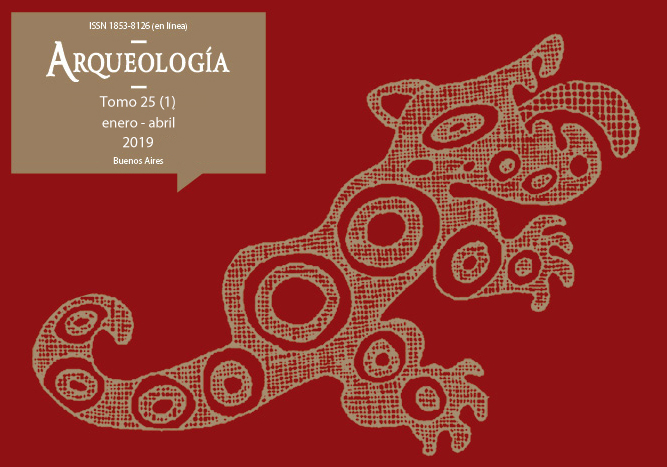Provenance, manufacture and use of lithic materials at Laguna Cabeza de Buey 2 site (Central Pampa grasslands, Buenos Aires) during the Middle and Late Holocene
Keywords:
Techno-morphological study, Micro-wear analysis, Mobility and landscape use, Environmental changes, Pampa grasslands, Middle and Late Holocene
Abstract
In this article, we describe the results obtained from the techno-morphological and micro-wear analysis of lithic materials from the excavated sector of Laguna Cabeza de Buey 2 site. Here, we assess data concerning the acquisition, production, and use strategies of these resources, as developed by hunter-gatherer groups under two different palaeoenvironmental conditions. During the Middle Holocene, we identified a semi-arid environment with the presence of a small, brackish and shallow body of water that permitted ephemeral human occupations. The technological characteristics, the low diversity of typological groups, and types of materials processed by the tools —mainly wood and bone— lends support to the presence of temporary human occupations linked to a high mobility pattern. On the other hand, towards the end of the Late Holocene, the palaeoclimatic model indicates humid conditions similar to the present-day, with a more stable landscape —dunes fixed with grassland vegetation— and the presence of a permanent body of water. In this context, there was a much more intense occupation, reflected in the greater quantity and diversity of tools, the wide range of materials processed with them, including skin, wood, bone and non-woody vegetables, as well as the appearance of pottery.Downloads
Download data is not yet available.
Published
2019-02-01
How to Cite
Messineo, P. G., & Pal, N. (2019). Provenance, manufacture and use of lithic materials at Laguna Cabeza de Buey 2 site (Central Pampa grasslands, Buenos Aires) during the Middle and Late Holocene. Arqueología, 25(1), 119-140. https://doi.org/10.34096/arqueologia.t25.n1.6005
Section
Articles
Copyright (c) 2019 Pablo G. Messineo, Nélida Pal

This work is licensed under a Creative Commons Attribution-NonCommercial-ShareAlike 4.0 International License.
Authors who publish in this journal agree to the following conditions:
- Authors retain copyright and yield to the journal right of first publication with the work registered with attribution license Creative Commons, which allows third parties to use the published always mentioning the authorship of the work and first publication in this magazine.
- Authors can make other independent and additional contractual arrangements for the non-exclusive distribution of the version of the article published in this issue (p. Eg., Inclusion in an institutional repository or publish it in a book), provided that clearly indicate that the work was published for the first time in this magazine.
- It allows and encourages the author / s to publish their work online (eg institutional or personal pages) before and during the process of revision and publication, as it can lead to productive exchanges and greater and more rapid dissemination of work published (See The Effect of Open Access).





(1)13.png)






1.jpg)
1.jpg)


13.png)
1.png)


(1)1.png)









